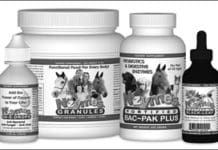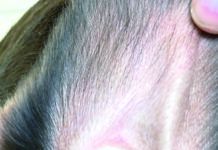Home Search
allergies - search results
If you're not happy with the results, please do another search
Steroids for Dogs: Pros & Cons
Steroids are perhaps one of the most ubiquitous medications in the veterinary world. They can be used for a host of problems ranging from inflammation and allergies to autoimmune disease. While they are incredibly useful and diverse medications, steroids are not without significant side effects. It is important to know why they are used and how they can best be used. It is also critical to realize the possible negative effects and interactions that can occur. Steroids are not benign.
Are You Allergic to Your Dog?
Those of us who struggle with allergies of any type can thank our immune system for its tendency to over-react to certain perfectly harmless things in the environment. In the case of an allergic reaction to dogs, the body is reacting to harmless proteins in the dog's urine, saliva, or dander.
Home-Prepared Dog Food
including ground meat
Liver Health in Dogs
Promoting the health of your dog's liver may be the key to preserving his long-term health. The liver, located centrally in the dog's body as the link between the breathing and circulatory activities of the chest and the digestive functions of the abdomen, works hard at its many tasks. The liver manufactures blood proteins and fat, and stores energy, fat-soluble vitamins, and iron.
Veterinarian-Prescribed Dog Foods
An examination of veterinarian-prescribed dog foods that purport to prevent or treat disease, and over-the-counter foods that promise to "promote" improved health. Medical diets are the ones formulated for dogs with health problems, from vexing but garden-variety conditions such as itchy skin or digestive issues, to more serious health problems such as cancer or kidney disease. Some of these foods are what we'll call veterinary diets" (available only from veterinarians); the rest are over-the-counter (OTC) products
Enzyme Therapy for Quicker Canine Injury Recovery
Enzymes are protein-like compounds that, in small amounts, speed the rate of biological reactions. Unstable, fragile, and easily inactivated, enzymes are produced within living cells to perform specific biochemical reactions. Enzymes exist in plants as well as animals. Without them, life as we know it would not exist. Enzymes cause seeds to sprout, flowers to blossom, plants to grow, autumn leaves to change color, and fruits to ripen.
Yeast Infections in Dogs
Thirty years ago, even though the systemic yeast infection called candidiasis had already become an epidemic, practically no one knew anything about it. Even now conventional medicine tends to ignore the problem, but word has spread among health-conscious consumers. If you haven't had a candida yeast infection yourself, you know dozens of people who have and dozens of dogs as well.
Groundbreaking Dog Allergy Medicine: Apoquel and Cytopoint
Apoquel and Cytopoint, both manufactured by Zoetis, have been around for some time now – eight years and five years, respectively. They represent the...
Prevent Dog Ear Infections by Cleaning Your Dog’s Ears
As a small-animal veterinarian, I see dogs for “check ears” appointments daily. Ear problems are common in dogs – the basic anatomy of the...
Common Toenail Injuries on Dogs
Nails: All dogs have them. In fact some dog breeds, like the Great Pyrenees, have 22 of them. Yet nails are commonly ignored by many dog owners. There are numerous common problems with this area in dogs, ranging from minor broken nails to more devastating diseases like cancer. Proper maintenance with nails trims and periodic inspection of the nail and nail fold will ensure early detection of any problems with your canine friend.
Bee Products Have a Special Meaning for Dogs
Bees may sting, but they create some of the world's most valuable, versatile products. Honey, bee pollen, royal jelly, beeswax, propolis, and even the venom from bee stings are all touted for their human health benefits and many experts say that dogs derive the same advantages.
The Importance of Dog Grooming and Canine Skin Care
The primary function of the dog's hair is as a protective and insulating coating. But if the eyes are the gateway or the window to the soul, the skin and hair are both gateway and window to the embodiment of an animal's inner health and well-being. Shiny hair, that is, a hair coat that exudes a healthy and lustrous sheen, is an indicator of overall health of the animal.













